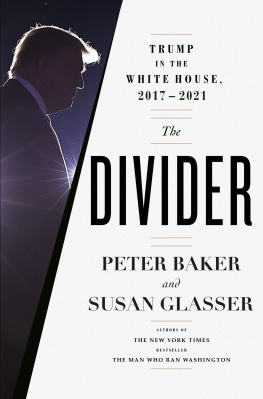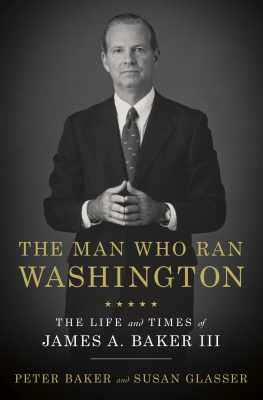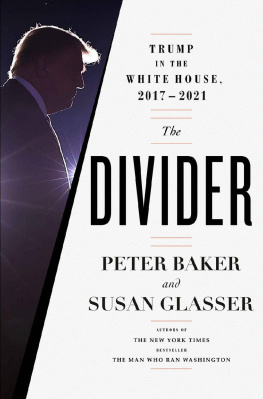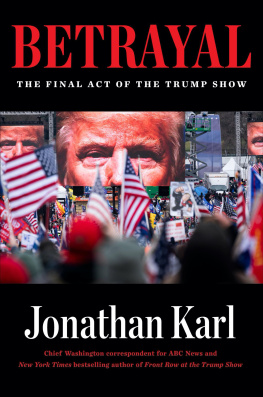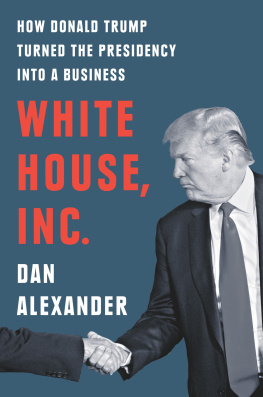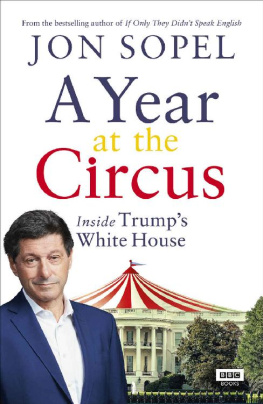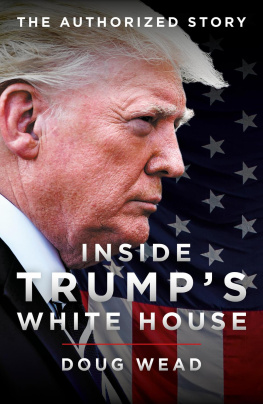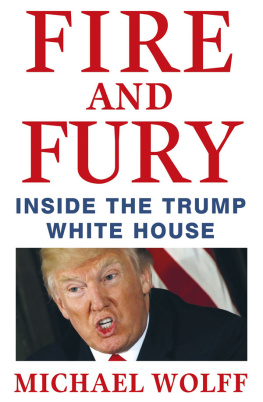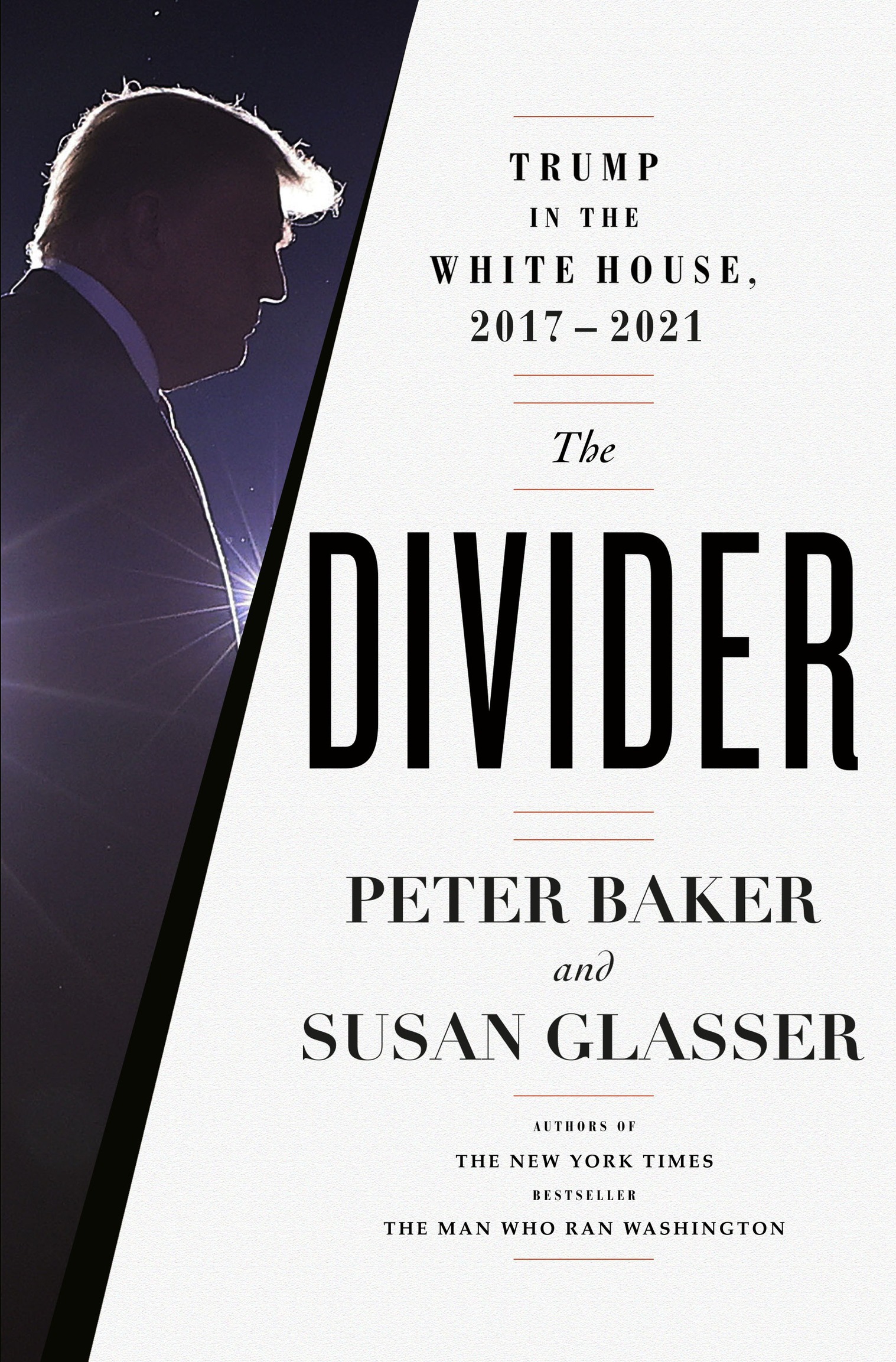Also by Peter Baker and Susan Glasser
The Man Who Ran Washington:
The Life and Times of James A. Baker III
Kremlin Rising:
Vladimir Putins Russia and the End of Revolution
Also by Peter Baker
The Breach: Inside the Impeachment and Trial of William Jefferson Clinton
Days of Fire:
Bush and Cheney in the White House
Obama: The Call of History
Impeachment: An American History
(with Jon Meacham, Timothy Naftali, and Jeffrey A. Engel)
Copyright 2022 by Peter Baker and Susan Glasser
All rights reserved. Published in the United States by Doubleday, a division of Penguin Random House LLC, New York, and distributed in Canada by Penguin Random House Canada Limited, Toronto.
www.doubleday.com
DOUBLEDAY and the portrayal of an anchor with a dolphin are registered trademarks of Penguin Random House LLC.
Photographs courtesy of the Donald J. Trump Presidential Library, unless otherwise noted.
Cover photograph by Chip Somodevilla / Getty Images
Cover design by Michael J. Windsor
Library of Congress Control Number: 2022937453
ISBN 9780385546539 (hardcover)
ISBN 9780385546546 (eBook)
ep_prh_6.0_140874742_c0_r0
For Theo
and our fathers Ted and Steve
Contents
INTRODUCTION
The Calling Card of a Presidency
When we set out to write The Divider, we began with a simple premise, that Donald Trumps refusal to accept defeat in the 2020 election, and the insurrection at the Capitol he summoned to overturn his loss, were no violent outliers but the inexorable culmination of a sustained four-year war on the institutions and traditions of American democracy. As the historian Michael Beschloss observed on the afternoon of January 6, 2021, while the pro-Trump mob surged through the halls of Congress, chanting Hang Mike Pence! Hang Mike Pence! and sending the vice president and lawmakers fleeing for their lives, This day has been foreshadowed by every hour of this presidency.
This is a book about what happened in that presidency, about an unimaginable period in our history when the United States had a leader for the first time who neither knew nor subscribed to many of the fundamental tenets of the Constitution and even actively worked to undermine them. From the day he took office until the day he left, Trump sought to bend if not break many of the rules that constrained presidents in the American system, so that holding on to power despite the will of the voters was only the next logical step. To understand what happened on January 6, 2021, it is necessary to understand what happened on January 20, 2017, and all the days in between.
This is not exclusively a work of history, however. Trump, and Trumpism, have captured the Republican Party and radicalized it. The former president, twice impeached and twice acquitted, is the only chief executive since the founding of the nation to obstruct the peaceful transfer of power and he has spent the time since his exit from the White House seeking to become only the second president ever to return to the office. Tens of millions of his followers believed the big lie that he was not defeated and continue to do so to this day. His partys leadership, rather than repudiate him, still looks to him as its titular head and president-in-waiting. The Trump era is not past; it is Americas present and maybe even its future.
We could think of no more urgent project than to record and seek to understand what really happened when Trump was in the White House. It is not yet a matter for the archives; it is a report from an active crime scene, still under investigation by multiple authorities. Someday, whether soon or not, it will no longer be a subject of current events. And then, we hope, this book can play a different role, explaining for future disbelieving generations what it was like when a crude New York real estate mogul with an itchy Twitter finger, an outsize self-regard, and an extreme disdain for all who came before him ended up as the president of the United States.
We chose to call the book The Divider because for four years, from the American Carnage speech that opened his tenure to the Rigged Election charade that cursed its tumultuous ending, Trump pitted Americans against Americans, the United States against its allies, and his own staff and family members against each other. He threw matches on the dry kindling of race relations in the United States and escalated a polarizing culture war over competing visions of national identity. Even when the deadliest plague in a century struck, the nations forty-fifth president spoke of two countrieshis America, Red America, and that of the blue states opposed to him. He soon turned a simple thing like a face mask worn to protect against a public health threat into a wedge issue between warring parties. Trump made divisiveness the calling card of his presidency.
This alone set him apart from all the other American presidents of our lifetime. George H. W. Bush called for a kinder, gentler America. Bill Clinton vowed to be a repairer of the breach. George W. Bush presented himself as a uniter, not a divider. Barack Obama declared there was not a Blue America and Red America but the United States of America. None of them fully lived up to those ideals, but they at least gave voice to the aspiration that a president should endeavor to bring the country together. Trump never saw it that way. He exploited the fissures in American society to gain, wield, and hold on to power. He did not create those fissures, any more than he created the weaknesses in the people around him that he so effectively used for his own purposes. America on the eve of his ascendance was more fractured than at any other time in generations. But he leveraged Americas differences for his own ends and created new ones along the way. He was, is, and always will be a wrecking ball, as a Republican senator once put it, the chaos candidate who would become a chaos president, just as one of his 2016 Republican rivals had warned. He sought out enemies and where they did not exist, he invented them. With Trump, there was always an us and always a them.
For most of his seventy years before arriving at the White House, this was of little consequence outside his family and the business worlds in which he operated. The fact that he lied and cheated and did not pay his bills harmed mostly the creditors affected by his six bankruptcies or those ripped off in his various failed ventures. The producers at NBC profited from his flair for conflict with a hit television show whose signature moment each week was Trump firing a different contestant. The New York City tabloids feasted on his many personal and professional feuds, to his shame-free delight.
But when he improbably won election as president of the United States in 2016, this became Americas reality too. Over the next four years, Trump identified the vulnerabilities in Washington, and in those who served there. He weaponized his prolific lies for his political benefit and bullied any who opposed him, setting up his administration as an endless series of loyalty tests. He hijacked a Republican Party that was riven and ailinga party that has now lost the popular vote in seven of the last eight presidential electionsand turned it into a cult of personality so dedicated to him that instead of producing a policy platform at its last convention it simply issued a resolution saying it was for Trump.

